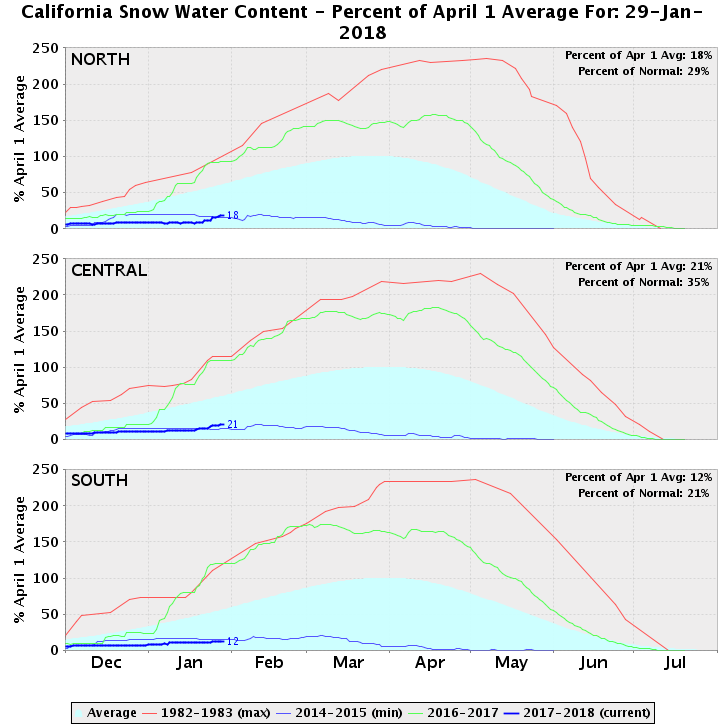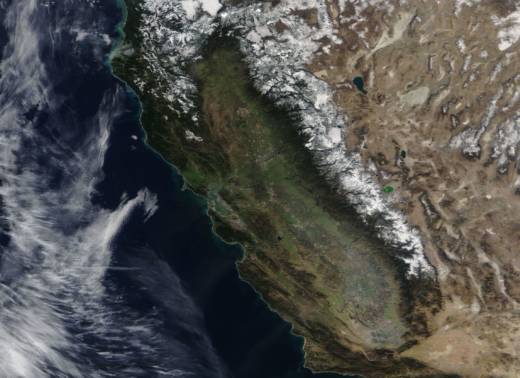T
his Thursday, a crew from the California Department of Water Resources will drive up to a meadow above Lake Tahoe to measure how much snow is there.
Media will be on hand to record the ritual, staged once a month between early January and May. The assembled reporters and camera-people will hear DWR's official pronouncement on the State of the Snowpack -- the snowpack and the moisture it contains being a key indicator of what kind of statewide water situation we're looking at in coming months.
We're not going out on a limb when we announce, 72 hours before the official measurement, that the snowpack is disappointingly meager and could well foretell a very challenging water year ahead.
The Department of Water Resources pumps out all kinds of data every day, including statewide snow statistics. And ahead of the coming survey, the daily summary of mountain recording stations from the Trinity Alps down to the south end of the Sierra Nevada shows the statewide snowpack at 30 percent of normal for Jan. 29 and 18 percent of the April 1 average.
There's more: DWR data show the snowpack in all three California regions scraping along near the record-low figures recorded at the deepest point of the five-year drought:

There was a little good news in the stormlets that visited last week. They were cold enough that lower-elevation locations picked up some lasting snow for the first time this season. But if you look at snowfall station by station throughout the mountains, the picture is rather bleak at all elevations.

